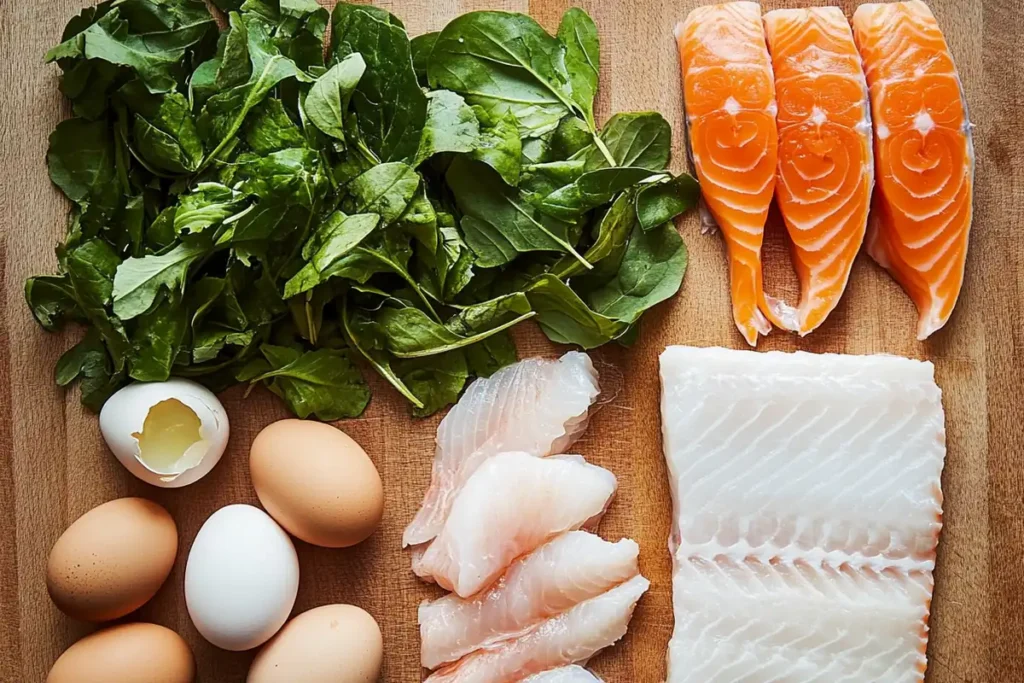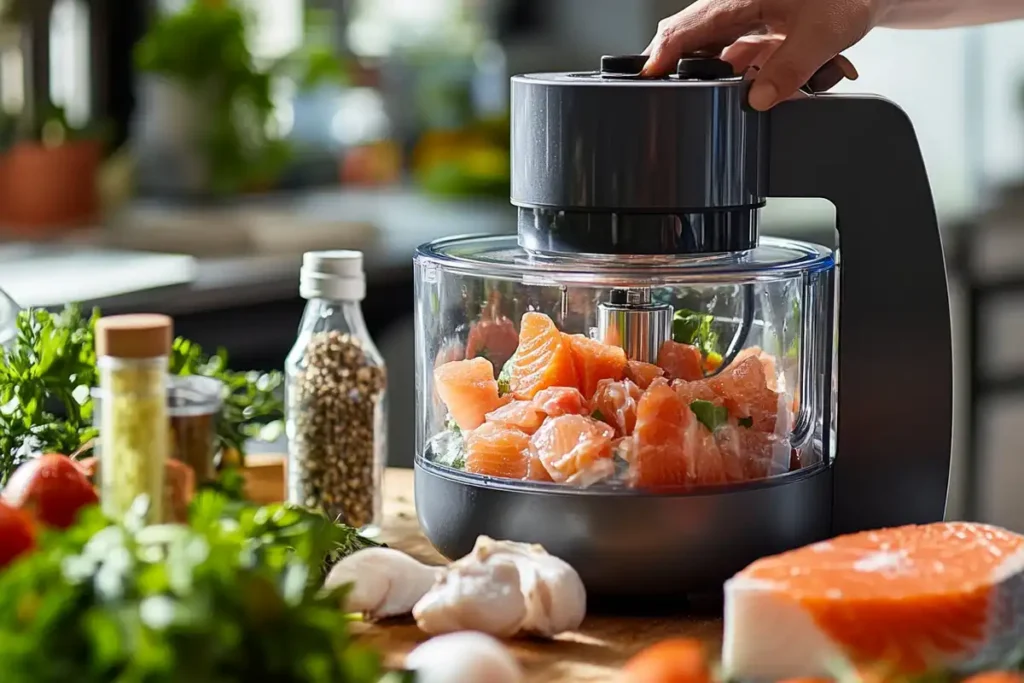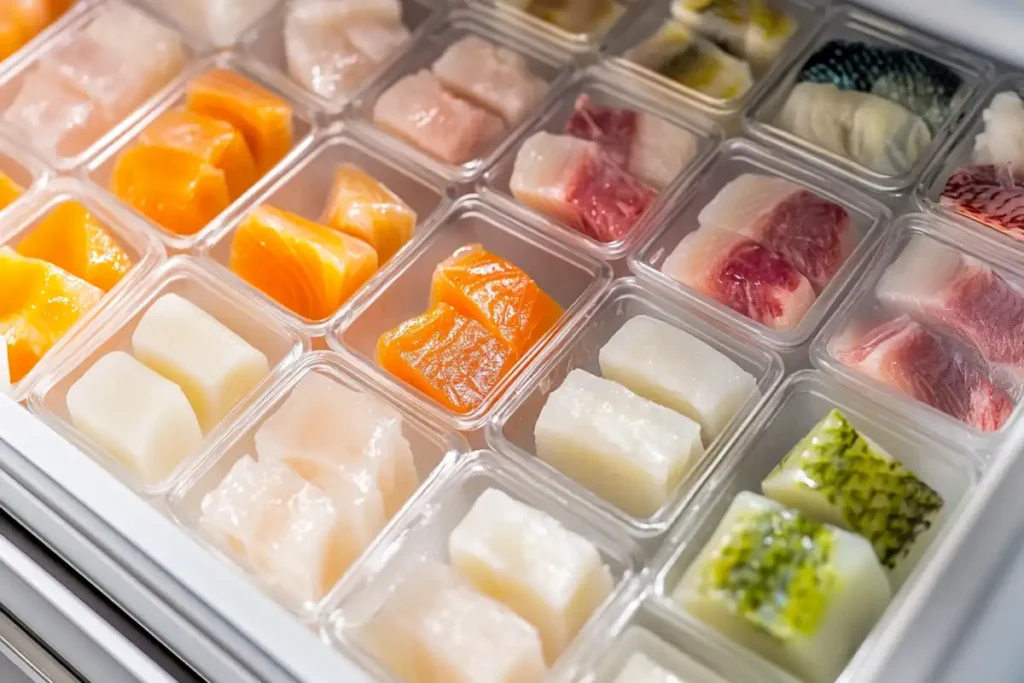Preparing fish food recipes at home offers an affordable, healthier, and personalized alternative to store-bought options. With just a few essential ingredients and some simple techniques, you can craft feeds that cater to the specific dietary needs of your aquatic pets. Whether you’re feeding herbivorous, carnivorous, or omnivorous fish, this guide will help you understand how to create and store fish food that promotes optimal health and longevity.
Introduction to Homemade Fish Food Recipes
Understanding the Importance of Homemade Fish Food
Creating DIY fish food recipes at home isn’t just about saving money—it’s also a fantastic way to ensure that your aquatic pets get exactly what they need. Many store-bought feeds can contain fillers or preservatives that lack nutritional value. When you make fish food yourself, you have control over the ingredients, ensuring high-quality, nutrient-packed meals for your fish. Plus, it’s surprisingly simple to tailor these recipes to suit specific fish species, no matter their dietary preferences.
Moreover, homemade fish food minimizes waste by allowing you to use fresh, organic leftovers from your kitchen. For instance, those wilted spinach leaves or extra shrimp in the freezer can serve as nutritious components. So not only do you keep your fish healthy, but you also reduce your household food waste—win-win!
Overview of Fish Dietary Requirements
Fish, like humans, thrive on balanced diets rich in essential nutrients such as proteins, fats, and vitamins. However, their requirements vary depending on their species. Herbivorous fish, like plecos, primarily consume plant-based foods such as algae and vegetables. Carnivorous fish, such as bettas, need protein-rich diets derived from insects, shrimp, and fish. On the other hand, omnivorous fish enjoy a combination of both.
Understanding the dietary needs of your fish is crucial. For instance, if you keep discus fish, they thrive on high-protein diets. But providing a carnivore-focused feed to herbivorous fish like goldfish could lead to health issues like bloating. That’s why incorporating diverse ingredients is essential to ensure all their nutritional needs are met.
To sum up, crafting homemade fish food offers the flexibility to meet these dietary requirements while also letting you bond with your aquatic companions through the care you provide.
Essential Ingredients for Fish Food Recipes
Protein Sources for Nutritious Fish Food

When crafting a homemade fish food recipe, incorporating high-quality protein sources is essential. Proteins are the building blocks for growth and repair, making them indispensable for all fish types, especially carnivorous and omnivorous species. Some excellent options include:
- Fresh Fish Fillets: Choose lean options such as tilapia or cod, which are rich in protein and easy for fish to digest. Be sure to remove bones and skin before use.
- Shrimp and Seafood: Small shrimp, squid, or scallops are perfect protein-packed choices. Additionally, they’re often a favorite for many tropical and marine fish.
- Insects and Worms: Earthworms, mealworms, or black soldier fly larvae are ideal natural protein sources. If collecting these, ensure they are free from pesticides.
- Egg Yolks: This is an affordable and convenient option, especially for feeding fry (baby fish). Boiled egg yolks are nutrient-dense and provide much-needed protein for young fish.
Each of these ingredients helps provide the essential amino acids fish need to thrive, keeping them healthy and vibrant.
Vegetable and Plant-Based Components
While protein is critical, vegetables and plant-based foods are equally vital, particularly for herbivorous and omnivorous fish. These ingredients offer vitamins, minerals, and fiber to aid digestion. Here are some top choices:
- Spinach and Kale: Dark leafy greens are rich in iron and vitamin C, boosting immune systems and supporting overall health.
- Zucchini and Peas: These provide a good mix of fiber and carbohydrates, especially for goldfish or guppies. Don’t forget to blanch them to make them softer and easier to digest.
- Spirulina and Algae: This superfood is a powerhouse of nutrients, including beta-carotene and antioxidants, perfect for enhancing coloration in fish.
- Carrots and Broccoli: Both are excellent sources of vitamins A and C. Chop them finely or blend them into the mix to ensure easy consumption.
Vegetables not only balance your recipe but also add a natural flavor fish love. For best results, use fresh or frozen produce, avoiding canned versions that may contain salt or preservatives.
Binders and Supplements for Fish Food
To ensure your DIY fish food holds together, you’ll need binders that are both safe and effective. At the same time, adding supplements can make the recipe more beneficial.
- Gelatin or Agar-Agar: These are great for binding the ingredients into a consistent form. Agar-agar is particularly useful for vegetarian fish food as it’s plant-based.
- Fish Oil: Adding a few drops of fish oil provides essential omega-3 fatty acids, which improve immunity and promote shiny scales.
- Vitamin and Mineral Powders: Supplements like calcium or multivitamin powders help ensure your fish receive any nutrients they may miss from their primary diet.
Using these components not only holds the mixture together but also boosts the overall nutritional value of the food.
A Holistic Approach to Ingredient Selection
Combining these protein, vegetable, and binder options creates a nutritionally complete fish feed. For instance, blending shrimp, spinach, spirulina, and a gelatin binder results in a balanced meal suitable for most tropical fish. The key is understanding the dietary preferences of your specific fish species and adjusting the mix accordingly.
Preparing Homemade Fish Food
Equipment Needed for Homemade Fish Food
Before you dive into making your DIY fish food recipe, having the right equipment on hand will make the process efficient and mess-free. Fortunately, you won’t need anything fancy—just some everyday kitchen tools:
- Blender or Food Processor: Crucial for blending ingredients into a smooth consistency that fish can consume easily.
- Mixing Bowls and Utensils: Use separate utensils to avoid cross-contamination with human food preparation.
- Ice Cube Trays or Baking Sheets: Perfect for portioning and freezing the fish food into manageable servings.
These simple tools will help you create nutritious fish food without unnecessary hassle.
Step-by-Step Preparation Guide

Making homemade fish food recipes might sound complicated, but it’s a straightforward and rewarding process. Here’s a step-by-step guide:
- Gather and Prep Ingredients:
Start by selecting high-quality ingredients such as fresh fish fillets, leafy greens, and spirulina. Chop vegetables into smaller pieces to ensure easy blending. If you’re using frozen ingredients, thaw them beforehand. - Blend to the Desired Consistency:
Combine your chosen ingredients in a blender or food processor. Add a small amount of water to aid blending, ensuring the mixture is smooth but not overly runny. Adjust the consistency based on the size of your fish—larger fish can handle chunkier textures, while smaller fish need finer blends. - Incorporate Binders:
Heat gelatin or agar-agar with water as instructed on the packaging. Once it cools slightly, mix it into the blended ingredients. This will help the food maintain its shape once set. - Portion the Mixture:
Spread the mixture into ice cube trays or flat sheets on a baking tray lined with parchment paper. Use a spoon to create uniform portions for easy feeding later. - Allow to Set:
Refrigerate or freeze the portions until they’re firm. For gelatin-based recipes, chilling in the fridge for 1-2 hours usually does the trick. For long-term storage, freezing is the best option.
Pro Tip:
If you’re feeding smaller fish or fry, consider running the mix through a fine strainer before setting it. This removes larger particles and ensures every bite is small enough for your tiny aquatic friends.
Storage and Shelf Life
Proper storage is key to preserving the freshness and nutritional value of your homemade fish food. Here’s how to store it:
- Freezing: After the food has set, transfer the portions into airtight containers or zip-lock bags. Label them with the date to track freshness. Frozen fish food can last up to 2 months without losing its quality.

- Refrigeration: For short-term use, store portions in the fridge. However, ensure they’re consumed within 5-7 days to avoid spoilage.
Signs of Spoilage to Watch For:
If your fish food develops an unusual smell, discoloration, or mold, discard it immediately. Feeding spoiled food can harm your fish’s health, so it’s better to err on the side of caution.
Feeding Your Fish with Homemade Fish Food
How to Feed Fish with DIY Fish Food
Feeding your fish with your freshly prepared homemade fish food is a simple process, but timing and portion control are key. Overfeeding can lead to water contamination, while underfeeding may result in nutrient deficiencies. Here’s a foolproof feeding routine to keep your aquatic pets healthy and happy:
- Start with Small Portions:
Fish have small stomachs, so begin with small amounts and observe how much they consume within 2-3 minutes. Adjust the portion size accordingly. - Feed at Regular Intervals:
Most fish thrive on 2-3 feedings per day. However, nocturnal species like catfish prefer being fed at night. Tailor your schedule to your fish’s habits. - Remove Uneaten Food:
Leftover food can decay and pollute the tank water. After feeding, use a net or siphon to remove any uneaten food promptly.
Adapting Fish Food for Different Species
Fish species have diverse dietary requirements. Customizing your fish food recipe based on their specific needs ensures their well-being and vibrant health.
- For Herbivorous Fish:
Include a higher proportion of vegetables such as spinach, zucchini, and spirulina. Blanch hard veggies like carrots for easier digestion. - For Carnivorous Fish:
Opt for protein-rich ingredients like shrimp, fish fillets, and worms. Reduce plant-based components to prevent bloating. - For Omnivorous Fish:
Strike a balance between protein and vegetables. Incorporate both meat and plant-based ingredients into the mix.
Tips for Feeding Baby Fish (Fry)
Young fish require special attention. Their dietary needs are more demanding, and they often need smaller, more frequent meals:
- Crushed Food: Break down the fish food into very fine particles using a sieve or mortar and pestle.
- Frequency: Feed fry up to 5 times a day to support rapid growth.
- Consistency: The texture should be soft and easy to consume, so blend the food finely.
Monitoring Your Fish’s Health
Feeding fish isn’t just about providing food—it’s about observing how they respond to it. Look for signs of health like vibrant colors, energetic swimming, and a healthy appetite. If you notice bloating, lethargy, or refusal to eat, it may be time to tweak the recipe or portion size.
Environmental Benefits of Homemade Fish Food
Reducing Waste Through DIY Fish Food Recipes
One of the unsung benefits of crafting your own fish food recipe is its positive impact on the environment. By repurposing leftovers and using fresh, natural ingredients, you significantly reduce household food waste. For instance, instead of discarding vegetable scraps like spinach stems or overripe peas, you can include them in your fish food. This eco-friendly approach not only saves money but also minimizes the need for commercial fish food packaging, which often contributes to plastic waste.
Sustainable Ingredient Sourcing
When you create DIY fish feed, you have complete control over the sourcing of your ingredients. Opting for locally produced or organic ingredients ensures that your fish food has a lower carbon footprint compared to store-bought alternatives, which are often mass-produced and shipped globally.
- Organic Vegetables: Use pesticide-free greens and vegetables to ensure your fish aren’t exposed to harmful chemicals.
- Ethically Sourced Proteins: Choose sustainable seafood or insect protein options to minimize ecological harm. For instance, black soldier fly larvae are an eco-friendly and nutrient-rich protein source.
Healthier Tanks, Healthier Ecosystems
Homemade fish food contributes to a cleaner tank environment. Unlike some commercial feeds that contain fillers and artificial additives, DIY fish food reduces the risk of water contamination caused by uneaten, indigestible food particles. Cleaner tanks mean healthier fish and fewer water changes, conserving resources like fresh water and filtration materials.
Supporting Local and Sustainable Practices
By purchasing ingredients from local farmers or markets, you indirectly support sustainable agriculture and small businesses. Additionally, using seasonal produce reduces dependency on out-of-season, imported goods, which tend to have a higher environmental cost.
The Broader Environmental Impact
Switching to homemade fish food isn’t just good for your tank—it’s good for the planet. Every small step towards sustainability, such as making your own fish food, contributes to reducing the strain on global resources. Imagine the cumulative impact if every aquarist adopted this practice!
Customizing Your Homemade Fish Food Recipe
Tailoring Fish Food to Dietary Preferences
One of the best parts about making your own fish food recipe is the ability to customize it for your fish’s specific needs. By experimenting with different ingredient combinations, you can craft meals that your aquatic pets will not only love but also thrive on.
- Herbivorous Fish: Focus on plant-based ingredients such as spirulina, algae, and blanched zucchini. Adding a small amount of garlic can enhance flavor and improve their immunity.
- Carnivorous Fish: Use a higher protein ratio with ingredients like shrimp, fish fillets, and insects. Avoid including too much plant material to prevent digestion issues.
- Omnivorous Fish: Create a balanced mix of proteins and vegetables. A combination of shrimp, spinach, and peas is a great starting point for omnivores.
Creative Recipe Variations
To keep things interesting for your fish, consider rotating between different recipes or adding new ingredients occasionally. Here are some creative options:
- Color-Enhancing Mix: Incorporate ingredients like carrots, red bell peppers, or spirulina to bring out the vibrant colors in your fish.
- Probiotic Boost: Add a small amount of natural yogurt or probiotics to support healthy digestion in certain species.
- Seasonal Variations: Use seasonal produce like pumpkins in the fall or cucumbers in the summer to ensure freshness and variety.
Adding Treats for Special Occasions
Just like us, fish enjoy treats now and then! These should be given sparingly to avoid overfeeding but can add variety to their diet:
- Frozen Bloodworms: A protein-rich delicacy for carnivorous and omnivorous fish.
- Dried Seaweed: A fantastic treat for herbivores, especially marine species.
- Small Fruits: Blanched and finely chopped fruit pieces like watermelon or papaya can occasionally be fed to omnivores as a sweet snack.
Balancing Nutrition and Fun
While it’s tempting to focus on flavor and variety, always prioritize the nutritional balance of your DIY fish food. Too much of one ingredient, even if it’s a favorite, can lead to deficiencies or health issues over time. Keep a detailed log of the recipes you use, how often you feed them, and how your fish respond.
Experimenting Safely
Introducing new ingredients should always be done gradually. Monitor your fish’s behavior and tank conditions closely when testing a new recipe. If they refuse the food or show signs of stress, switch back to a proven formula and try again later with adjustments.
FAQs About Homemade Fish Food Recipes
How to make live food for fish?
Live food is an excellent option for fish that require high-protein diets or enjoy hunting their meals. Common live food options include brine shrimp, daphnia, blackworms, and bloodworms. To make live food at home:
- Cultivate Brine Shrimp: Use a simple brine shrimp hatchery kit. Add saltwater and eggs, and they’ll hatch within 24–48 hours.
- Raise Daphnia (Water Fleas): Keep them in a separate tank with green water or algae as their food source.
- Earthworm Farms: For larger fish, create an earthworm compost bin using kitchen scraps to feed the worms.
These options ensure a fresh, nutritious, and chemical-free diet for your fish.
How do you make homemade fish feed?
Making homemade fish feed is straightforward. Start by blending high-protein ingredients (like shrimp or fish fillets) with vegetables (like spinach or peas). Add a binder like gelatin to hold the mixture together. Portion it into cubes or sheets, then freeze or refrigerate it for storage. Adjust the ingredients based on your fish’s dietary preferences and size.
What are the best ingredients for fish food?
The best ingredients vary depending on the type of fish you’re feeding:
- For Herbivorous Fish: Spirulina, kale, zucchini, peas, and algae.
- For Carnivorous Fish: Shrimp, white fish, worms, and egg yolks.
- For Omnivorous Fish: A mix of vegetables and proteins, such as spinach and shrimp.
Adding vitamin and mineral supplements ensures a well-rounded diet for all species.
What is the best homemade food for fish?
The best homemade fish food balances nutrition and ease of preparation. A simple recipe includes:
- Protein (shrimp or fish fillets),
- Vegetables (spinach and peas),
- A binder (gelatin),
- Optional supplements (fish oil or multivitamins).
Blending and freezing these ingredients creates a versatile feed suitable for most species.
How much homemade fish food should I feed my fish?
Feed only what your fish can consume in 2–3 minutes to prevent overfeeding. Observe their behavior during feeding times—if there’s leftover food, reduce the portion size. On average, feed 2–3 times a day for adult fish and up to 5 times a day for fry.
Can I store homemade fish food long-term?
Yes, freezing DIY fish food in airtight containers or zip-lock bags extends its shelf life to approximately 2 months. Ensure portions are small to prevent repeated thawing and freezing, which can degrade nutrients.

